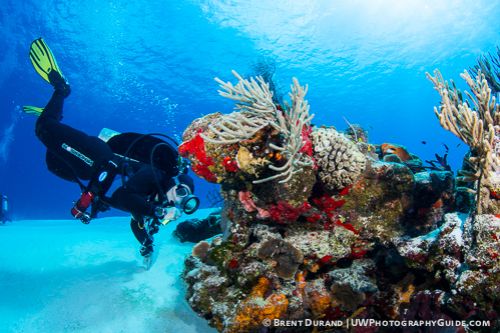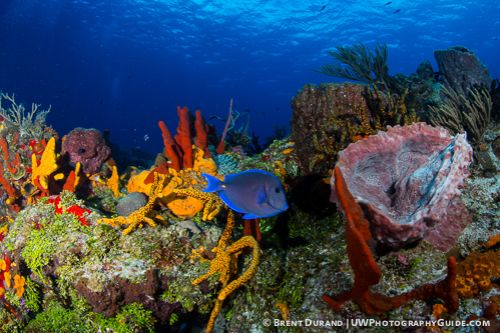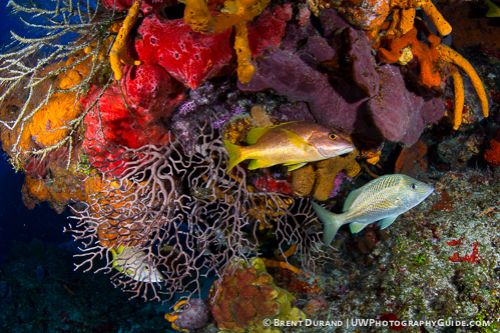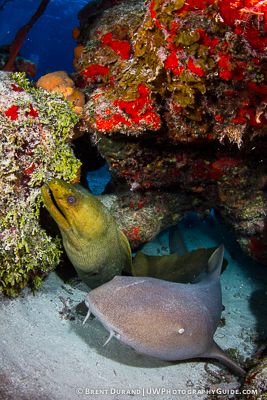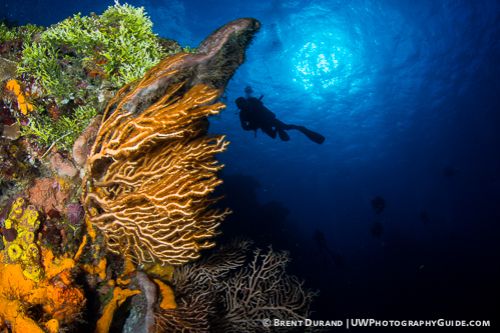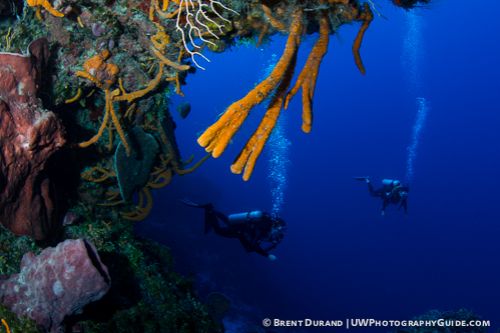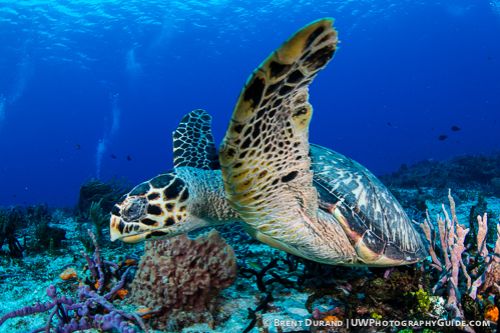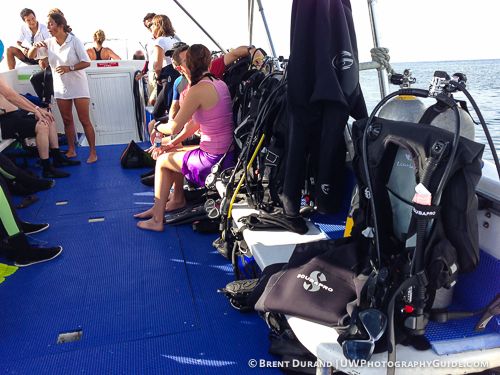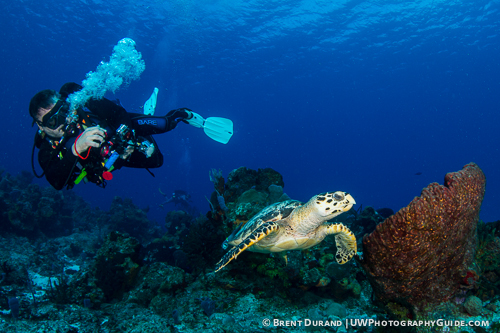
Essential Drift Diving Photo Tips
Maximize Photo Opportunities and Capture Great Shots on your Next Dive
Text and Photos By Brent Durand
Planned drift dives are a sublime experience as one floats weightless through a colorful reef amongst the fish. That is, unless you’re a photographer. Drift diving requires close contact with a constantly moving group, meaning that photographers have very limited time to spend with subjects and compose photos. There are a number of additional challenges, including swimming against the current, losing sight of the group and stabilizing for a shot without touching the reef (with body or fin wash). The good news is that there are a few techniques to keep in mind that will make capturing great images much easier.
Anticipate Photo Opportunities
This is the best way to capture photos on any dive, and it is particularly important while drift diving. If you’re not thinking ahead to the next shot, chances are you’ll already be drifting by a beautiful composition or interesting critter by the time you notice the photo potential. At that point it’s often too late to try and swim up current.
As soon as a potential photo opportunity comes into sight it’s wise to start preparing to duck out of the current. As soon as you can, take note of the surrounding area so that you can position yourself properly to duck quickly out of the current without disturbing reef or sand. This idea also applies when searching cracks and ledges for nurse sharks, fish and smaller critters.
Focus on One Composition Style
The less there is to change between shots the more quickly you can frame and capture an image. If you set your strobe position for vertical compositions, leave that position for a while and scan the reef for elements that will create a good photo. With a basic position set, all that is required are minor adjustments of strobe position and power.
Camera settings like ISO, aperture and shutter speed are critical for properly exposing ambient light in the water (wide-angle backgrounds). Once you’ve properly exposed for the water in a direction relative to the sun, try to shoot in that direction for a while before changing the camera settings again.
Dive at the Front of the Group
Diving at the front means that you’ll have more time to shoot before the group has drifted to the edge of sight, whether you’re diving with 3 or with 20. This is helpful to gain extra shooting time and can allow you to compose images with silhouettes of the approaching divers. If you’re not looking for other divers in the frame, shoot off to the side, away from the drift path of the other divers.
Additionally, stopping for a photo while at the front of the group allows the guide to know that you’ve intentionally stopped. They’ll prefer this much more than trying to locate your bubbles up current if you disappear off the back of a group.
Be Ready to Enter the Water
Drift diving requires entering the water and descending quickly in order to keep groups together and dial-in buoyancy before coming into contact with the reef. Once the boat driver has triangulated the position it’s always GO time. As a photographer, being one of the first in the water gives you a chance to start prepping your camera (wave bubbles off the port, extend strobe arms, etc) before the descent. This is important because you never know when you will drop in on that rare, skittish subject!
Conclusion
Drift diving is a lot of fun and presents some very unique photo opportunities. Many fish and marine life will let a calm, drifting diver approach much closer than someone kicking and breathing hard, and with preparation and smart camera skills it’s possible to capture some amazing images. It’s just up to you to make it happen!
These photos are from a recent trip to Cozumel, Mexico. Special thanks to Scuba Club Cozumel, Scuba Du, Aqua Safari and Living Underwater. Email brent@bluewaterdivetravel.com for questions on Cozumel diving and help booking your next trip.
About the Author
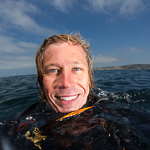
Further Reading
-
Fascinating Fluoro Photography
-
The Ultimate Guide to Shooting Wrecks
-
The Secrets of Shooting Amazing Patterns
Where to Buy
Please support the Underwater Photography Guide by purchasing your underwater photography gear through our sister site, Bluewater Photo & Video. Click, or call them at (310) 633-5052 for expert advice!





